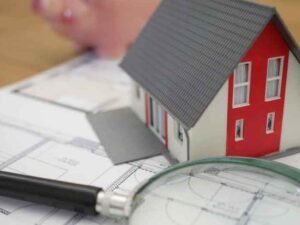Creating a strong first impression starts the moment someone approaches your home. The exterior sets the tone for everything inside, whether you’re welcoming guests, preparing to sell, or simply wanting a place that feels polished and inviting. Many homeowners today pay closer attention to curb appeal because it plays a major role in how a property looks, functions, and even how enjoyable it feels to come home each day. You don’t need a major renovation to make a noticeable difference. Instead, thoughtful design choices, both structural and decorative, can bring balance, charm, and personality to your outdoor space.
If you’ve been thinking about how to refresh your home’s exterior, the best approach is to take it one step at a time. Start by looking at the overall layout, then move to the details that bring character and warmth. This layered method makes the process easier and helps you see what your space truly needs. One of the most impactful places to begin is with the foundational elements that define the shape and flow of your outdoor space, setting the stage for all other improvements.
Build a Strong Foundation With Functional Outdoor Elements
When you think about improving curb appeal, one of the first things to consider is how your outdoor space is structured. The layout, pathways, borders, and built-in features create the framework for everything else you add. Many homeowners start by enhancing the overall design through hardscaping, which uses durable features like walkways, stone borders, entry steps, and patio surfaces to create organization and visual flow throughout the yard. Companies that specialize in this type of work can help shape the space so it feels cohesive, well-defined, and easy to navigate, giving your home a polished look before you even focus on plants or décor.
Integrating these elements early helps strengthen both style and functionality. A clearly defined entry path instantly improves the way guests experience your home. A strategic border can separate planting areas from open lawn, making maintenance easier and giving everything a clean, intentional look. Larger features, such as retaining walls or small seating areas, can add dimension and keep the landscape feeling balanced. When you build a strong structural foundation, it becomes much easier to layer in the softer, decorative elements that bring color and personality to the rest of your exterior.
Elevate Your Exterior With Well-Planned Landscaping
Once the foundational elements are in place, the next step is bringing your yard to life with plants that complement your home’s style. Landscaping plays a major role in creating curb appeal because it adds texture, movement, and color. You can improve the look of your home dramatically by choosing plants that thrive in your climate and match the level of upkeep you’re comfortable with. Even simple combinations of shrubs, flowering plants, and ornamental grasses can make a big impact.
Think about how each part of your yard will look throughout the year. Mix plants that bloom in different seasons so your home stays visually appealing from spring through fall. You can also use evergreens and perennials for long-lasting structure. If you want a crisp, clean appearance, consider creating layers, taller plants in the back, medium-height shrubs in the middle, and colorful flowers or ground cover at the front. This creates a natural flow that feels inviting and well-organized.
Refresh Your Home’s Exterior Surfaces for a Clean, Updated Look
Another simple yet effective way to boost curb appeal is by refreshing the surfaces of your home. Over time, siding, brick, and trim can become dull or weathered, even if they’re still in good condition. Power washing the exterior can instantly lift dirt and grime, giving your home a brighter and newer appearance. Repainting trim, doors, or shutters is another way to add contrast and freshen up the exterior without committing to a full repaint.
Updating your front door is especially powerful. A new coat of paint in a bold color or a timeless neutral can transform the look of your entryway. Repairing worn areas or replacing outdated materials also contributes to a polished appearance. These smaller changes require minimal effort compared to large-scale renovations, but they often provide some of the most noticeable improvements.
Improve Outdoor Lighting to Highlight Key Features
Good lighting does more than make your home safer. It enhances the overall look of your exterior. When placed thoughtfully, lighting can highlight architectural details, illuminate your entryway, and make your landscaping stand out at night. Pathway lights guide visitors and create a warm glow that feels welcoming. Wall-mounted fixtures near the door help brighten the entrance and make the home feel more inviting.
Consider soft, warm-toned lights rather than very bright, harsh ones. This creates a comfortable atmosphere and complements the natural colors around your home. You can also incorporate accent lights to draw attention to trees, garden beds, or unique architectural features. Good lighting ties together all of the elements you’ve added, structure, landscaping, and design, and helps your home look beautiful at all hours.
Upgrade Your Entryway to Create a Strong First Impression
Your entryway is one of the most important parts of your home when it comes to curb appeal. It’s the first place guests see up close, and it sets the tone for what they can expect inside. Small updates can go a long way here. Clean up the porch, repaint or replace the front door, and update your house numbers to a style that complements your home. Coordinated planters with fresh greenery or flowers add life and personality, especially when placed symmetrically on either side of the door.
Adding a seating element like a bench, not for long-term sitting but as a decorative piece, can make the space feel more inviting. If space allows, decorative accents such as lanterns or subtle seasonal touches can enhance the entry without overwhelming it. Your goal is to create a space that feels intentional and welcoming.
Add Personal Touches Through Décor and Unique Design Elements
Curb appeal isn’t just about structure. It’s also about personality. Once your foundation and landscaping are in place, you can add finishing touches that express your style. Outdoor art, decorative mailboxes, stylish doormats, or a small collection of porch décor can bring warmth and individuality to your home. These elements shouldn’t overpower the architectural style, but they should feel aligned with it.
Look for pieces that complement your home’s colors and textures. For example, metal accents might suit a modern home, while natural wood elements might fit a more traditional one. These small additions show care and intentionality, helping your home feel both polished and personal.
Improving your curb appeal doesn’t require a major renovation. Thoughtful design choices, starting with the structure of your outdoor space and building toward decorative elements, can transform the look of your home. When you take your time, layer each improvement, and choose elements that reflect your style, you create an exterior that feels both inviting and beautifully balanced. Whether you focus on pathways, plants, lighting, or small personal touches, every change contributes to a home that looks warm, well-cared-for, and uniquely yours.










